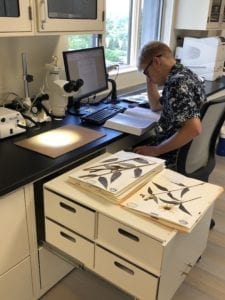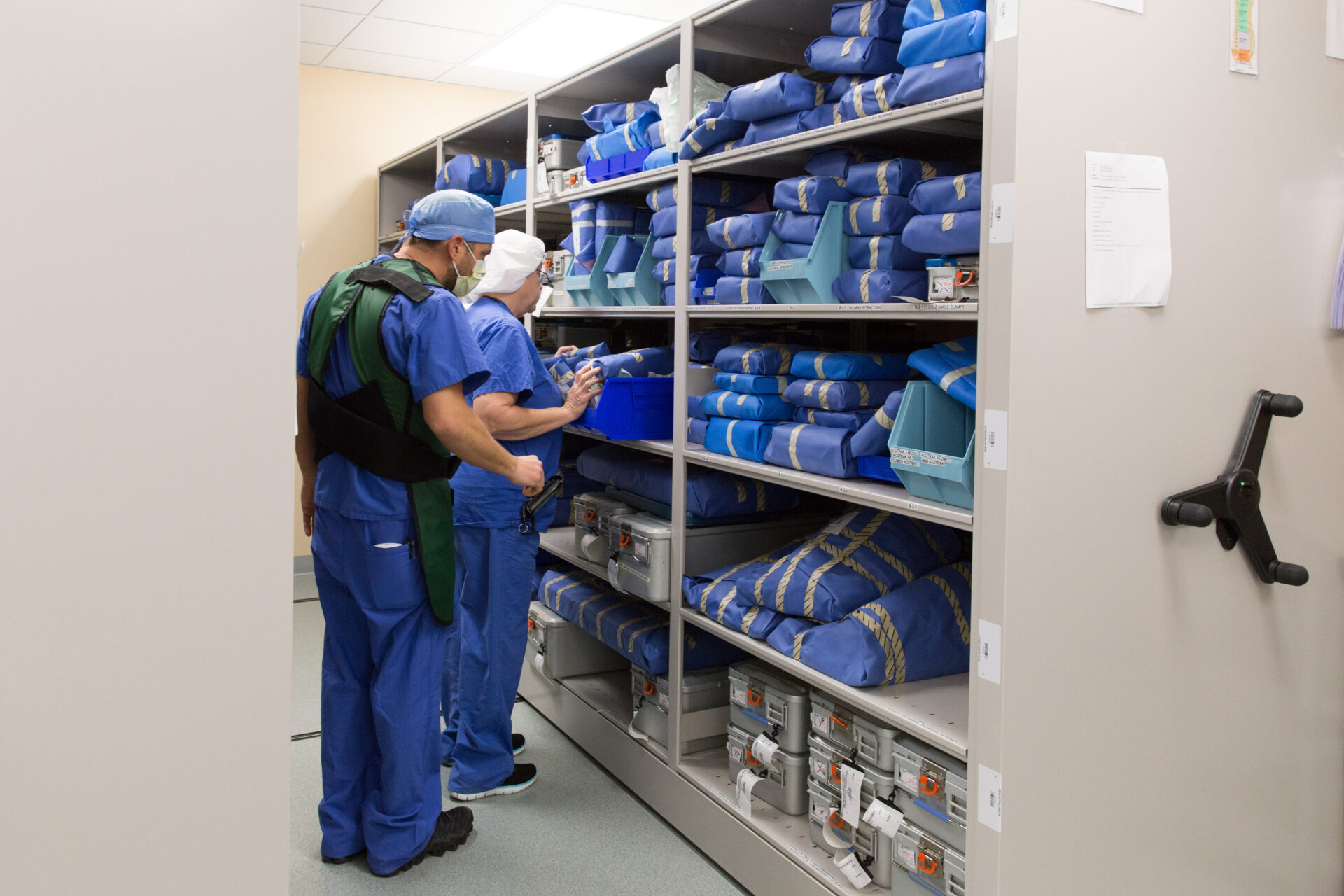
Preserving plant specimens is not just a matter of archival interest—it’s a critical component of ongoing scientific research, conservation, and education. The Morton Arboretum, a leading institution dedicated to studying and preserving trees, holds an extensive collection of botanical specimens requiring specialized storage to ensure long-term conservation. This blog delves into the challenges faced by the Morton Arboretum in managing its vast herbarium collection and how Bradford Systems, through the use of Viking Herbarium Cabinets by Spacesaver, provided an innovative and effective solution.
The Importance of Herbarium Museum Cabinets in Botanical Preservation
Herbarium collections are vital repositories of botanical knowledge. They serve as reference libraries for plant identification, taxonomic research, and ecological studies. These collections often contain specimens hundreds of years old, making their preservation of paramount importance. The delicate nature of plant specimens, coupled with their susceptibility to environmental factors like humidity, pests, and dust, necessitates specialized storage solutions.
The Morton Arboretum: A Botanical Haven
The Morton Arboretum, located on 1,700 acres in Lisle, Illinois, is home to over 222,000 live plants representing nearly 4,300 taxa worldwide. This expansive collection serves as a living library of global plant diversity and supports the Arboretum’s mission of conducting leading scientific research on tree health and improvement. The Arboretum’s herbarium, a critical part of this mission, houses thousands of preserved plant specimens integral to ongoing research and education efforts.
The Challenge: Preserving a Vast and Varied Collection
The Morton Arboretum faced a significant challenge in managing its herbarium collection. With specimens arriving in various forms—jars, boxes, plastic bags, and paper folders—the Arboretum needed a storage solution to accommodate this diversity while ensuring long-term preservation. Additionally, they required a system to streamline their workflow, from the initial intake of specimens to their final placement in long-term storage.
The Arboretum’s existing storage solutions were inadequate for its growing collection, and it needed a flexible, scalable, and secure system that could meet its current and future needs. This challenge was compounded by the fact that plant specimens are particularly vulnerable to environmental contaminants, making proper storage even more critical.
Bradford Systems' Solution: Custom Botany Storage Cabinets by Spacesaver
Bradford Systems proposed using Viking Herbarium Cabinets by Spacesaver to address the Morton Arboretum’s unique storage needs. These cabinets protect botanical collections from environmental threats while optimizing storage space. The key features of these cabinets include:
- Hermetically Sealed Construction: The cabinets are designed to eliminate exposure to dust, insects, vapor, and other contaminants, ensuring that the specimens remain in pristine condition over time.
- Full-Length Door Hinges: These hinges run the entire cabinet length, providing a tight seal that protects the contents from environmental factors.
- Customizable Configurations: The cabinets can be tailored to fit various storage needs, accommodating herbarium cases, paper bags, and dried boxes, ensuring that every type of specimen is stored appropriately.
- Integration with Mobile Systems: These cabinets can be combined with mobile shelving systems to maximize storage capacity, allowing the Arboretum to store more specimens in the same footprint while maintaining easy access.
Implementing the Solution: From Design to Deployment
Implementing the Viking Herbarium Cabinets at the Morton Arboretum involved close collaboration between Bradford Systems and the Arboretum’s herbarium staff. The goal was to design a storage system that not only met the herbarium’s immediate needs but also provided a foundation for future growth.
Designing for Workflow Efficiency
One critical aspect of the project was improving the workflow associated with processing plant specimens. They must go through several stages before placing specimens in long-term storage, including initial intake, temporary storage, and processing—the design solution needed to facilitate this workflow. In contrast, ensuring specimens were handled carefully at each stage.
Bradford Systems designed custom bins that fit seamlessly into the workflow. These bins were sized to accommodate the various forms where specimens arrived, ensuring they could be easily moved from one stage to the next. The workstation drawers were also customized to fit four bins at a time, providing additional work surfaces when needed and making the entire process more efficient.
Enhancing Long-Term Storage
For long-term storage, the Viking Herbarium Cabinets provided the perfect solution. The cabinets were configured to meet the specific needs of the Arboretum’s collection, with different compartments designed to hold specimens securely while minimizing the risk of damage. Hermetically sealed cabinets ensured that the botanical specimens would be protected from dust, pests, and other environmental threats, including infestation, preserving them for future researchers and educators. These compact cabinets, featuring a reference shelf for convenient viewing, are crucial for enhancing long-term storage of natural history collections, including geology specimens, and preserving the integrity of herbaria collections.
The cabinets’ modular design also allowed for easy reconfiguration as the Arboretum’s collection grew. By integrating these cabinets with mobile shelving systems, Bradford Systems maximized the available storage space, allowing the Arboretum to expand its collection without requiring additional physical space.
The Results: Improved Efficiency and Preservation
Bradford Systems’ implementation of the Viking Herbarium Cabinets had a transformative impact on the Morton Arboretum’s herbarium operations. The new storage system not only provided the necessary protection for the botanical specimens but also significantly improved the Arboretum’s workflow efficiency.
Increased Storage Capacity
One of the new system’s most immediate benefits was the increased storage capacity. The Arboretum could store more specimens in the same space by integrating the Viking cabinets with mobile high density shelving and accessories. This was particularly important as the Arboretum received new specimens from around the world, ensuring that they could continue expanding their collection without worrying about space constraints.
Enhanced Specimen Protection
The hermetically sealed cabinets provided a level of protection that was previously unattainable. The full-length door hinges and tight seals protected the specimens from dust, insects, and other contaminants, common threats to botanical collections. This enhanced protection, along with our specialized museum storage products, including botany cabinets and museum storage cabinets, designed with additional space for the circulation of air and fumigants, will help preserve the specimens for decades, supporting the Arboretum’s research and educational missions while also maximizing floor space.
Streamlined Workflow
The custom-designed bins and workstation drawers significantly streamlined the Arboretum’s workflow. By designing storage solutions aligned with the Arboretum’s specific processes, Bradford Systems reduced the time and effort required to process and store specimens. This improved efficiency and allowed the Arboretum staff to focus more on their core research and education tasks.
Looking Forward: The Future of Botanical Collection Storage at the Morton Arboretum
The success of the Viking Herbarium Cabinets at the Morton Arboretum highlights the importance of customized storage solutions in preserving valuable botanical collections. As the Arboretum continues to expand its collection and undertake new research initiatives, the storage system provided by Bradford Systems, with the help of a storage specialist, will play a crucial role in supporting these efforts. It will be carefully designed through a thorough design process to meet the needs of tomorrow’s curators while also providing unsurpassed customer service.
Looking forward, the Arboretum plans to continue using the Viking cabinets and mobile shelving systems to accommodate its growing collection. The system’s flexibility and scalability mean that it can be easily adapted to meet future needs, ensuring that the Arboretum’s collection remains well-protected and accessible for years to come.
Conclusion
The partnership between the Morton Arboretum and Bradford Systems is a testament to the power of innovative storage solutions in preserving the world’s botanical heritage. By providing a customized, flexible, and secure storage system, Bradford Systems has helped the Arboretum protect its invaluable collection of plant specimens, ensuring they remain available for research, education, and conservation efforts.
In the broader context of museum and botanical storage, this project’s success underscores the importance of selecting the right storage solutions to meet each collection’s unique needs. Whether you are managing a small herbarium or a vast botanical garden, the principles of effective storage—protection, accessibility, and scalability—are key to preserving these natural treasures for future generations.
At Bradford Systems, we are committed to helping institutions like the Morton Arboretum achieve their goals through innovative storage solutions. Our expertise in museum storage and our dedication to customer satisfaction makes us the ideal partner for any organization looking to enhance its storage capabilities. Contact us today to learn more about how we can help you protect and preserve your collections.
What Makes Herbarium Cabinets Essential for Preserving Plant Specimens?
Herbarium cabinets are very important for preserving plants. They create a controlled space that shields specimens from moisture, pests, and light. Cabinets with adjustable shelves and tight seals help keep the air flowing freely. This minimizes the chances of handling damage, which helps with long-term preservation.
Can These Storage Solutions Be Adapted for Other Types of Collections?
The flexibility of these cabinets goes beyond just plants. They have a reconfigurable interior with adjustable shelves. You can change the widths to fit textiles, geological samples, and other collections. This shows how adaptable they are.




